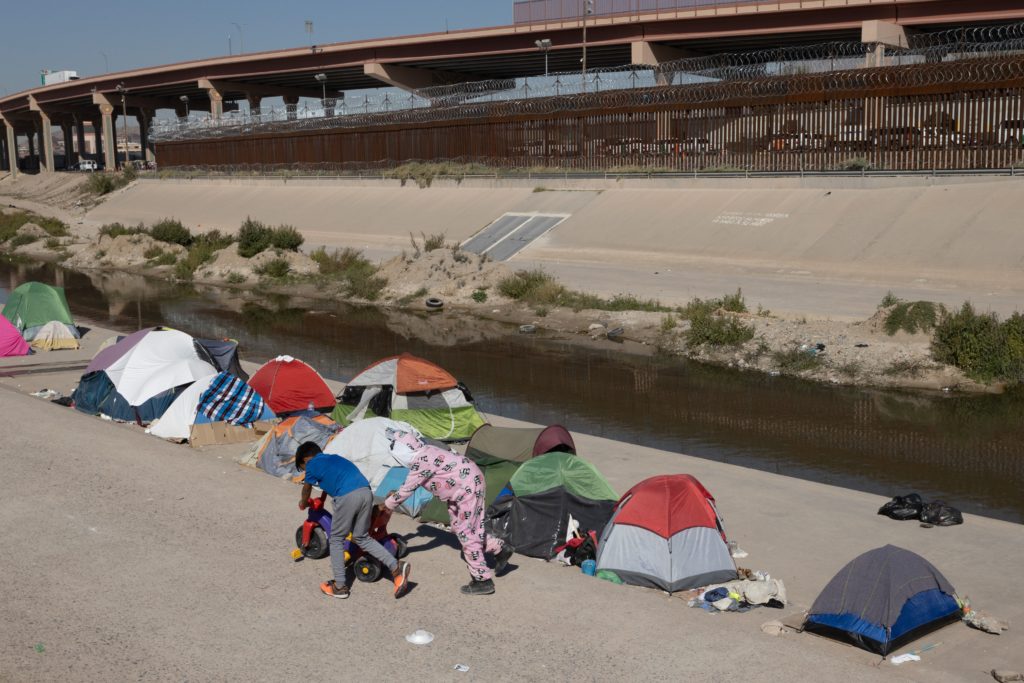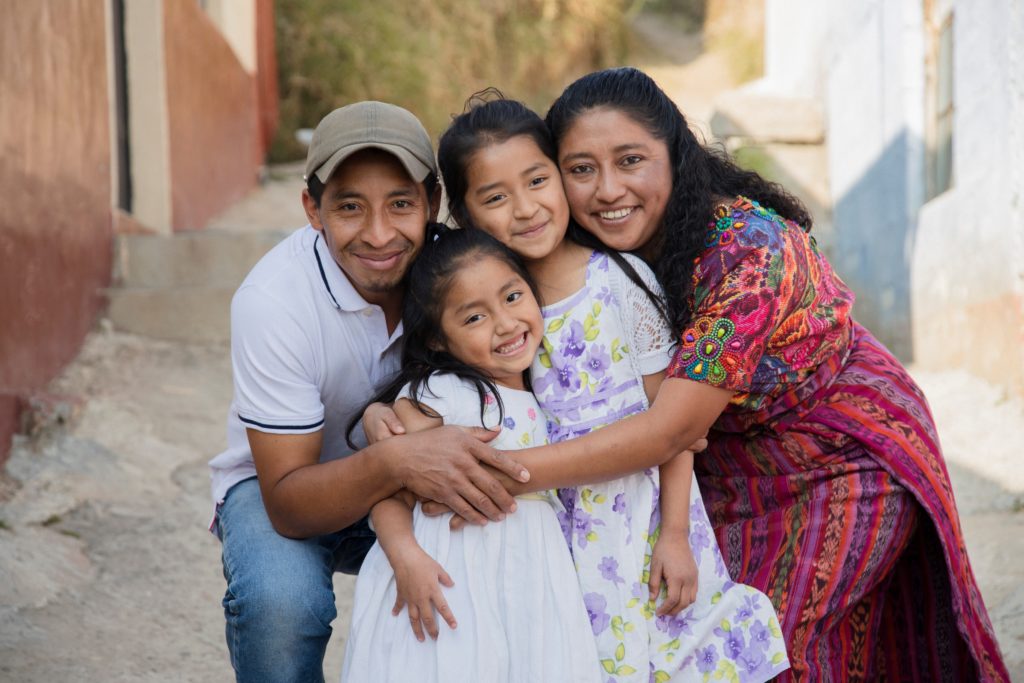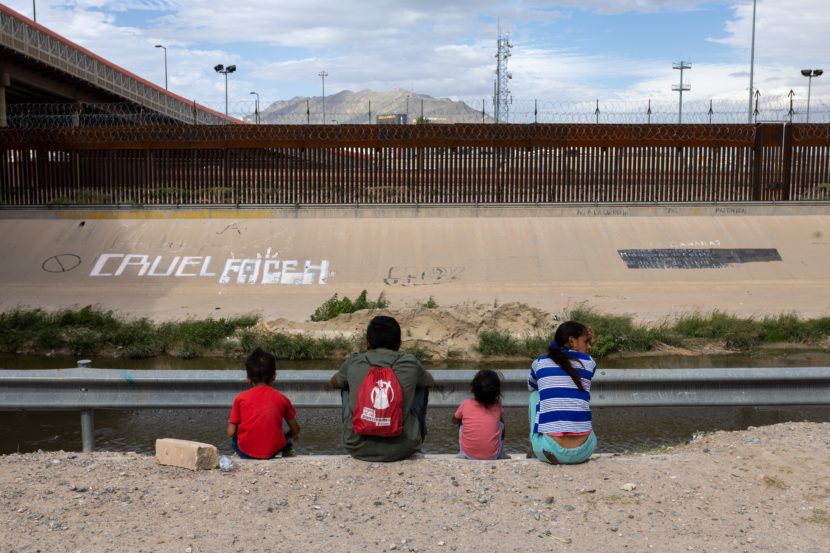An increasing number of families with children have been making dangerous journeys for safety in the US, with their applications often processed amidst challenging circumstances. The treatment of children by US border control in encampments has raised significant concerns, with reports indicating violations of their rights. As a result of these adverse conditions, these children are experiencing a decline in both their mental and physical well-being.
Shortcomings in US border facilities
Historically, most unauthorized entrants to the US were adult males from Mexico seeking employment. However, presently, an increasing number of families with children are embarking on perilous border journeys, fleeing violence, poverty, and oppression in pursuit of safety and security. Moreover, instances of unaccompanied children undertaking such journeys are frequent (Associated Press, 2024).
Since the spring of 2023, thousands of asylum seekers from various countries have gathered in makeshift camps in remote areas of the California desert. Among them are dozens of children. According to US law, minors should not be directed to open-air sites except for the time necessary for border patrol to prepare them and arrange transport to a more suitable facility. However, immigration officials directed migrants to these camps without providing sufficient food, water, shelter, or medical services (Alvarez, 2024).
The holding areas, functioning essentially as outdoor encampments, are also devoid of essential amenities such as sewerage systems and running water. Volunteers at the site have reported dire conditions, noting that young migrants and infants were suffering from fevers, diarrhea, vomiting, and seizures. Shockingly, some migrants have been forced to eat leaves after enduring days without food, highlighting the failure of border patrol officers to provide basic necessities. (Conway, 2024).
Government’s role in upholding children’s rights at the border
Children who wait in temporary camps at the US-Mexico border are under the care of the border patrol. According to the Federal Court, the United States Department of Homeland Security (comparable to the interior or home ministries of other countries) is obliged to quickly process the children and place them in facilities that are safe and sanitary. They are also fully in charge of determining how long the children can be held and providing services such as toilets, sinks, and temperature controls (Associated Press, 2024).
However, the US Customs and Border Protection (CBP) blatantly violates the 1997 Flores Settlement Agreement that prohibits the detention of unaccompanied minors in immigration detention for more than 20 days. The Flores Agreement resulted from a class action case filed by civil liberties and immigrant rights groups on behalf of undocumented minors and their families, who reported inadequate treatment while in detention (Lisette Flores, n.d.).
According to the settlement, it is an administrative duty to promptly release children from detention to a parent, adult relative, or licensed juvenile program willing to assume custody. If temporary detention is necessary, the settlement mandates that the government must provide an age-appropriate setting with minimal restrictions, the opportunity to contact family, and adequate standards of care, including access to food, water, and medical assistance (Lisette Flores, n.d.).
In addition, the Convention on the Rights of the Child, which was adopted in 1989, emphasizes the obligations of countries towards child migrants. The convention states that countries should refrain from separating families and should only detain children when absolutely necessary and for the briefest possible duration. Although the United States has signed the convention, it stands as the sole country globally that has not ratified it, thereby not being legally obliged to adhere to its provisions (Cheatham & Roy, 2023).
The impact of border policies on children

The infrastructure of border enforcement was initially designed for a different era, primarily catering to single men seeking work in the US. However, increased enforcement measures have significantly hindered the ability to cross undetected.
Moreover, there are limited legal pathways for both work and family reunification, compounded by a backlog in the US asylum system. This failure of the current immigration system to meet 21st-century needs, particularly for children, exposes them to dangerous conditions (Hendricks, n.d.).
Several places for holding migrants have emerged along the California border, including a desert area next to a highway and a plateau in mountainous terrain. While not officially set up by immigration authorities, these locations have become important for their operations (Baumgaertner, 2024). Within the camp, teens are moving dressed in identical government-issued attire escorted by the staff. In one of the tent cities, more people are detained than in all but one of the nation’s 204 federal prisons (Burke & Mendoza, 2018).
Psychologists are questioning the facility’s ability to identify children with special mental health needs due to the large number of children and their tendency to suppress emotional distress. While the children may manage to cope within the facility, prolonged stays may lead to greater consequences. Under federal policy, migrant youth shelters typically require one mental health clinician for every 12 children, yet officials at the facility revealed they have just one clinician for every 50 children (Burke & Mendoza, 2018).
Addressing the humanitarian crisis at the US-Mexico border
In response to the severe humanitarian crisis at the US-Mexican border in 2024, various advocacy organizations, mutual aid groups, and individuals have taken crucial steps to offer immediate assistance and document the abuses carried out by the US Customs and Border Protection (CBP) against migrants. The Federal Court affirmed that CBP is expected to promptly adhere to the terms of the Flores Settlement Agreement and, also, guarantee the safety and well-being of all children under their care (Mullett, 2024).
To address the mounting pressure at the border, the policy analyst from the Migration Policy Institute suggests that Congress overhaul the legal immigration system and implement a more efficient asylum process (Hendricks, n.d.). This would involve enhancing support and resources for border enforcement agencies to effectively manage migration flows while upholding humanitarian standards and safeguarding the rights of vulnerable migrants.
The government should also increase guest worker visas for Central Americans and grant them Temporary Protected Status to manage economic migration and provide a legal alternative to illegal immigration. In addition, rather than focusing on reducing family and child migration, the current administration should facilitate lawful migration. Above all, US policies on child migration must prioritize the best interest of the child (Bier, 2017).

At Humanium, we stand for every child’s right to safety, education, and well-being. Our mission is to protect children’s rights around the world, including those affected by migration and border issues. With your support, we can continue our efforts to advocate for vulnerable children, provide legal assistance, and improve living conditions in migrant-holding areas. Become a part of our mission by volunteering, donating, or becoming a member.
Written by Lidija Misic
Bibliography:
Alvarez Priscilla (2024), Federal judge rules that migrant children in desert camps need to be in safe and clean facilities. Retrieved from CNN at https://edition.cnn.com/2024/04/04/politics/migrant-children-desert-camps/index.html, accessed on May 26, 2024.
Associated Press (2024), US border patrol is responsible for safety of children in migrant camps, judge says. Retrieved from The Guardian at https://www.theguardian.com/us-news/2024/apr/04/border-patrol-safety-migrant-children-mexico, accessed on May 26, 2024.
Baumgaertner Emily (2024), Health Concerns Mount for Migrant Children at Outdoor Waiting Sites. Retrieved from The New York Times at https://www.nytimes.com/2024/03/28/health/children-migrants-border-health.html, accessed on May 26, 2024.
Bier J. David (2021), Immediate Solutions for Migrant Children. Retrieved from The Cato Institute at https://www.cato.org/publications/immediate-solutions-migrant-children, accessed on May 26, 2024.
Burke Garance & Mendoza Martha (2018), Desert detention camp for migrant kids still growing. Retrieved from WHYY at https://whyy.org/articles/desert-detention-camp-for-migrant-kids-still-growing/, accessed on May 26, 2024.
Cheatham Amelia & Roy Diana (2023), U.S. Detention of Child Migrants. Retrieved from The Council on Foreign Relations (CFR) at https://www.cfr.org/backgrounder/us-detention-child-migrants, accessed on May 26, 2024.
Conway Dan (2024), Migrant children held in fetid open-air encampments near Southern California-Mexico border. Retrieved from The World Socialist Web Site (WSWS) at https://www.wsws.org/en/articles/2024/04/02/cfoy-a02.html, accessed on May 26, 2024.
Lisette Flores Jenny (n.d.), The Flores Settlement. Retrieved from the United States District Court Central District of California at https://immigrationhistory.org/item/the-flores-settlement/, accessed on May 26, 2024.
Hendricks Tyche (n.d.), Judge Rules Border Patrol Must Care for Migrant Children Waiting in Camps. Retrieved from KQED at https://www.kqed.org/news/11982020/judge-rules-border-patrol-must-care-for-migrant-children-waiting-in-open-air-camps, accessed on May 26, 2024.
Mullett Layne (2024), Federal Court affirms that children held in open air detention sites are in CBP custody. Retrieved from American Friends Service Committee at https://afsc.org/newsroom/federal-court-affirms-children-held-open-air-detention-sites-are-cbp-custody, accessed on May 26, 2024.


